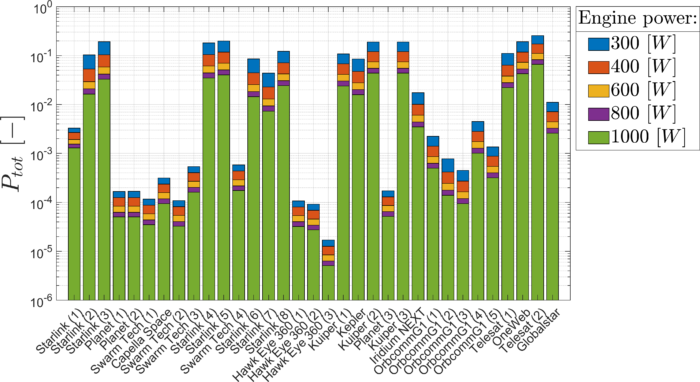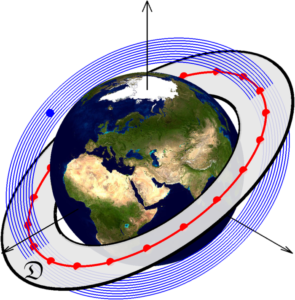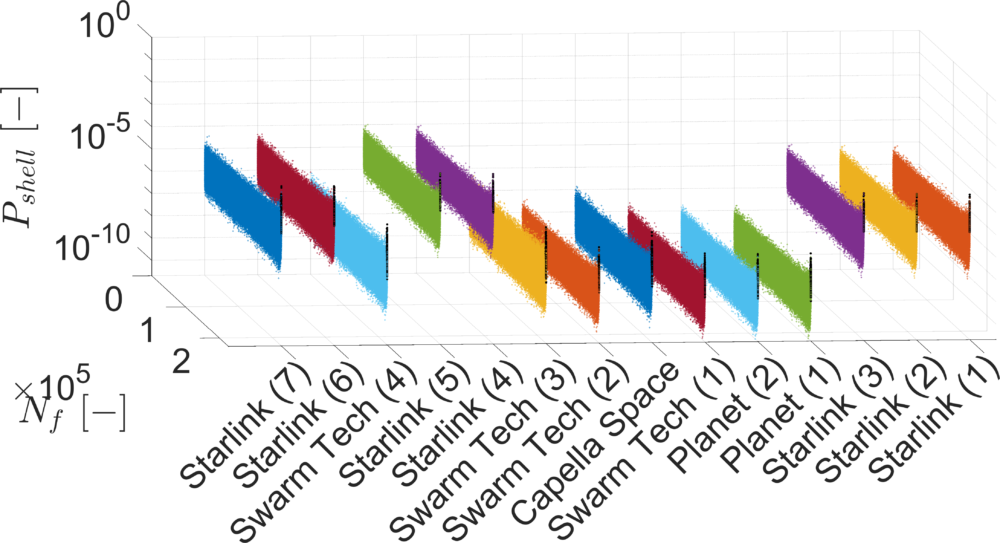The deployment of large constellations such as Starlink or OneWeb, composed of thousands or even tens of thousands of satellites, not only ushers a new age for space-based services, but also brings in new challenges to safe operations in space. Particularly, the replacement of aging constellation satellites will lead to a continuous traffic of deorbiting and injecting spacecraft. A recent paper by Eduardo Polli, Juan Luis Gonzalo and Camilla Colombo investigates the dynamics of de-orbiting and injecting satellites, which have to cross thin layers of space populated by thousands of constellations’ satellites.

In this work, the well-known formula developed by Chan for the estimation of the collision probability between two space objects, is integrated over the radial distance and the true anomaly phase, to obtain an analytical method capable of statistically assessing the environmental impact of satellite constellations in mere seconds.

The high degree of symmetry of constellations’ structure, allows for great simplifications, hence making this model computationally very efficient.
The article can be downloaded for free until October 17, 2022 at this link. Don’t miss it!

